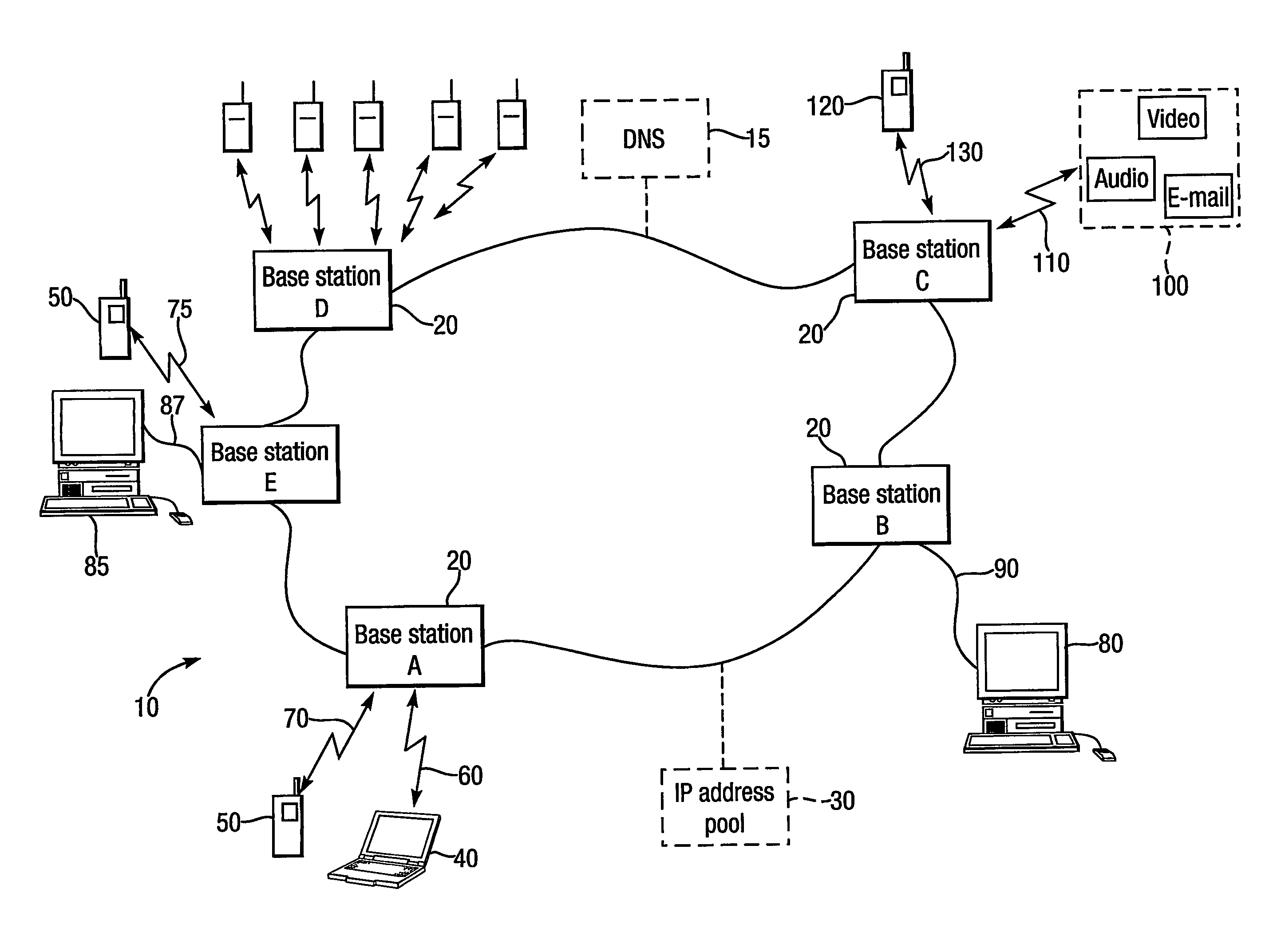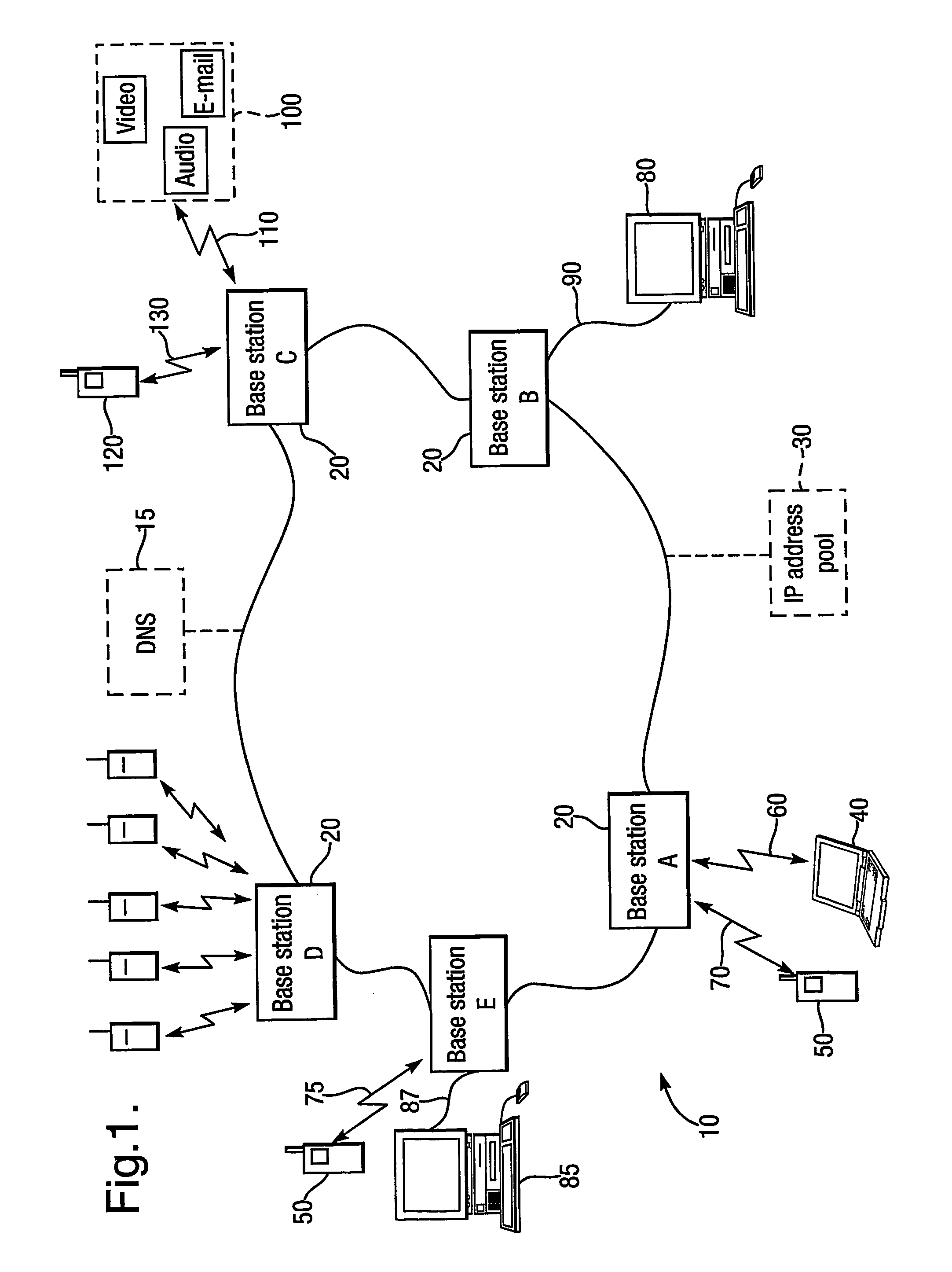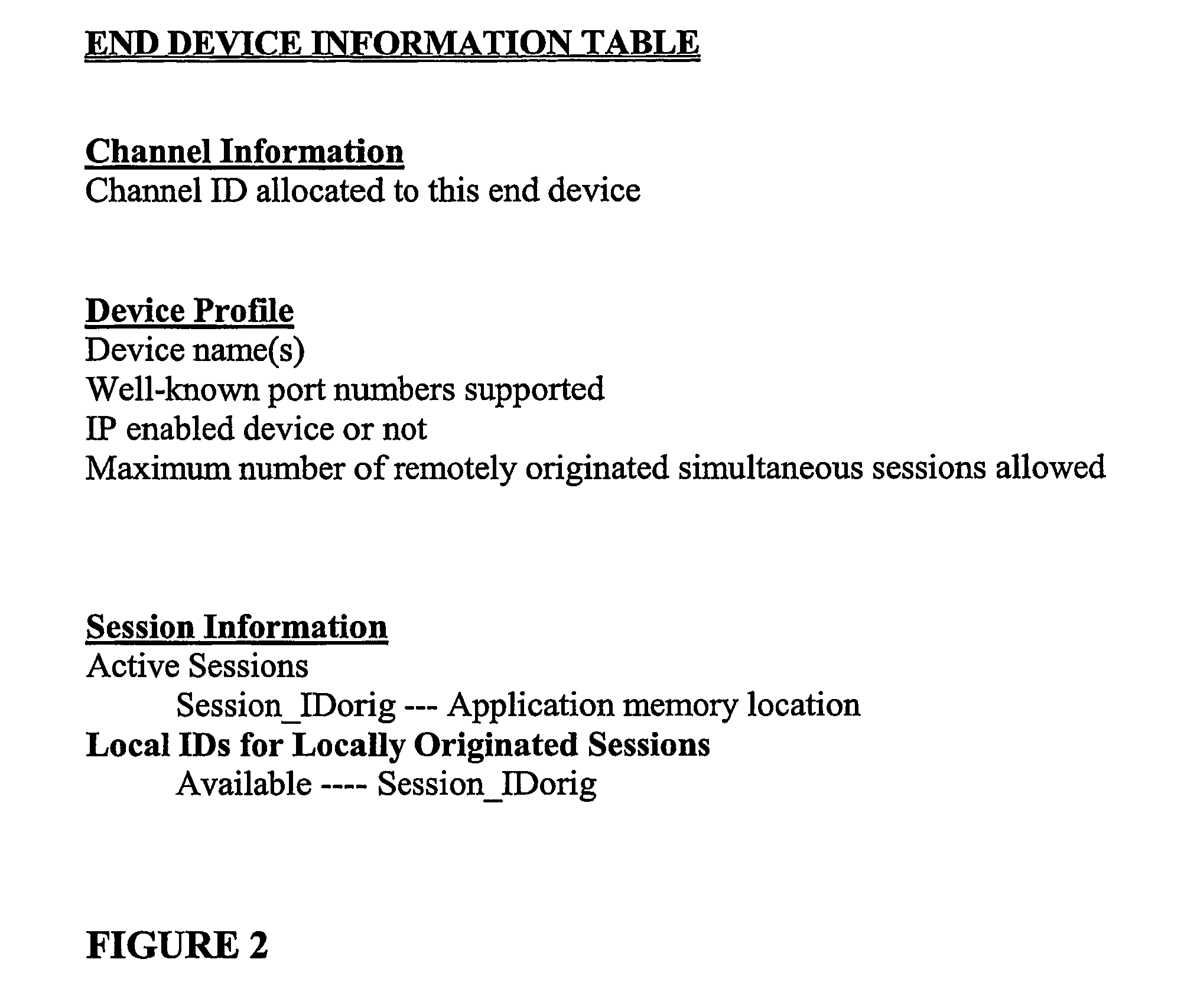Method of data transfer in mobile and fixed telecommunications systems
a fixed telecommunications system and mobile technology, applied in data switching networks, wireless commuication services, instruments, etc., can solve the problems of large delays in data transfer, no information available to the data sender, and traditional protocols to be reconsidered, so as to achieve a higher bandwidth access to the internet
- Summary
- Abstract
- Description
- Claims
- Application Information
AI Technical Summary
Benefits of technology
Problems solved by technology
Method used
Image
Examples
Embodiment Construction
[0055]Turning first to FIG. 1, a simplified schematic representation of a telecommunications network 10 is shown. The network comprises a plurality of fixed access points or base stations 20 which are interconnected. Attached to each base station 20 are one or more end devices. For example, a laptop computer 40 and a mobile telephone 50 are connected via wireless communication channels 60, 70 respectively to base station A. A fixed computer such as a personal computer 80 is attached via a fixed (wired) connection 90 to base station B, a mixed media device 100, which will be explained in further detail below, is connected via a wireless link 110 to base station C, and another mobile telephone 120 is likewise connected to the base station C via wireless communication link 130.
[0056]The network 10 also comprises a central database comprising a pool of assignable Internet Protocol (IP) addresses. The purpose of this central IP address pool will be explained in connection with FIG. 4 bel...
PUM
 Login to View More
Login to View More Abstract
Description
Claims
Application Information
 Login to View More
Login to View More - R&D
- Intellectual Property
- Life Sciences
- Materials
- Tech Scout
- Unparalleled Data Quality
- Higher Quality Content
- 60% Fewer Hallucinations
Browse by: Latest US Patents, China's latest patents, Technical Efficacy Thesaurus, Application Domain, Technology Topic, Popular Technical Reports.
© 2025 PatSnap. All rights reserved.Legal|Privacy policy|Modern Slavery Act Transparency Statement|Sitemap|About US| Contact US: help@patsnap.com



